Every year on March 14, many people eat pie in honor of Pi Day. Mathematically speaking, pi (π) is the ratio of a circle’s circumference (the distance around the outside) to its diameter (the length from one side of the circle to the other, straight through the center). That means if you divide the circumference of any circle by its diameter, the solution will always be pi, which is roughly 3.14—hence March 14, or 3/14. But pi is an irrational number, which means that the numbers after the decimal point never end. With the help of computers, mathematicians have determined trillions of digits of pi.
To celebrate Pi Day, check out this slideshow of circular microbes, research organisms, and laboratory tools (while you enjoy your pie, of course!). To explore more scientific photos, videos, and illustrations, visit our image and video gallery.
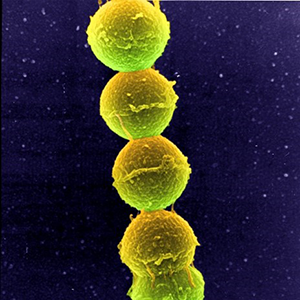
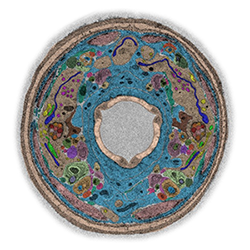
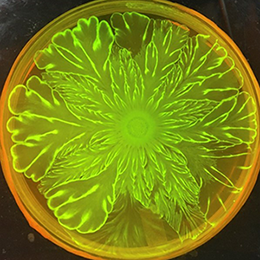
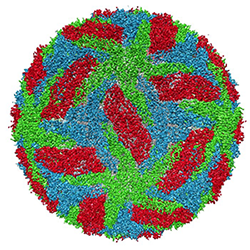
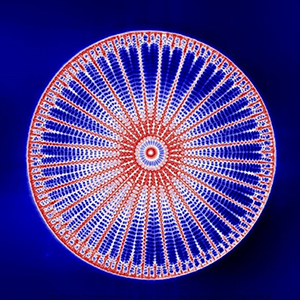
Streptococcus is a type of spherical bacteria that often forms pairs or chains, as shown here. Streptococcus can grow in the back of the mouth and throat. In some cases, this growth can cause infections such as strep throat.
Scientists use the small worm Caenorhabditis elegans (C. elegans) as a research organism to answer questions in developmental biology, neurobiology, and genetics. This image, which was taken with transmission electron microscopy, shows a cross section through C. elegans, revealing various internal structures.
Researchers often use round Petri dishes to grow bacterial cultures in the laboratory. Inside these dishes is a jellylike substance called agar that provides nutrients to the growing cells. Here, a floral pattern emerges from the growth of two bacterial species on agar.
Each year, dengue virus infects millions of people in tropical and subtropical regions through bites from infected mosquitos. Like many viruses, dengue is enclosed by a protective membrane. The proteins that span this membrane (shown in blue, green, and red) play an important role in the life cycle of the virus.
Arachnoidiscus diatoms, a type of microscopic alga, are sometimes nicknamed “wheels of glass” because of their delicate and intricate patterns.








Nice.
Thank you for the cute slideshow, Kimberly.